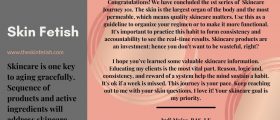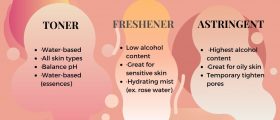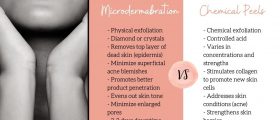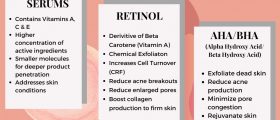
The skin is the largest organ of the body and requires TLC from the owner… YOU. The skin consists of 5 layers of the epidermis. The outermost layer of the epidermis is called the stratum corneum, which is dead skin. Skin barrier, acid mantle, defensive barrier are names that defines the outer epidermis layer. It consists of keratinocytes that constantly shed and replaced by new cells. The other 4 layers contains lipids to hold the skin together and melanocytes to produce pigment. Below the epidermis is the dermis and this is where the magic happens. The dermis produces collagen, protein, and adipose fat, which give the skin its subtleness. The epidermis depends on the dermis to help the barrier and Lack of proper skin care can accelerate the aging process.
What does the skin barrier do?
The skin barrier is the 1st line of defense because it serves as an “immune system” for the body, protecting the skin from toxins, pollutants and bacteria. The skin barrier also protects the skin from Trans-Epidermal Water Loss or TEWL. The body is about 80-90% water so persevering excretion of access water will help balance the skin’s barrier. The 2nd line of defense is the skin’s melanin, protecting the skin from the sun. Tanning is a by-product of the skin protecting itself from the sun; however, pigmentation = damaged cells.
How do you know if your skin barrier needs love?
Compromised skin barrier includes internal factors such as auto-immune disorders (lupus, diabetes, etc.) medication sensitivity, and skin conditions (rosacea, eczema, psoriasis, etc.). External factors include being in extreme weather conditions. This environment can require changes to your skin regimen by adding more or less products. Frequent travelers experience this often. Also, Harsh chemicals like detergents and perfumes can irritate the skin. These inconsistencies can make the skin work overtime and cause damage.
What are signs of a damaged barrier?
- Dryness
- Sensitivity
- Inflammation
- Redness
- Itchiness
If needed, the epidermis will pull nutrients from the dermis to maintain its job as a barrier. The dermis will repair damage cells before producing new ones. Long term effects of the dermis working overtime are:
- Increased dryness
- Slow or deficient lipid production
- Increased sensitivity
- Fine lines and wrinkles
Just like when part of your body is injured, the cells will immediately start the repair process and needs other cells to help with healing. Proper care and rest is needed so the body doesn’t work overtime. The same goes for your skin. It needs nutrients to assist with the renewal process to avoid the aging process.
So what are ways the skin barrier can be improved?
Monthly facials will help balance the ph of skin, making a healthy environment for new skin. Other facial protocols include galvanic devices to stimulate the skin (this could be added to most of my facials), O2 facials which will kill bacteria and products rich with amino acids and vitamins. At home:
- Avoid over exfoliating the skin. Keep it to 2-3 times a week
- Be cautious of Rx strength topical products like Retin-A
- Minimize extremely hot showers. Too much steam can dehydrate the skin
Protecting the skin’s barrier is one of the most important steps when it comes to facials. Now that you have an understanding of the skin barrier, ask your aesthetician what the best facial protocol for you according to your skin condition.
Remember: Healthy skin cells =Increased Skin Health
Stay Beautiful!
-Judi












Leave a Reply
Be the First to Comment!